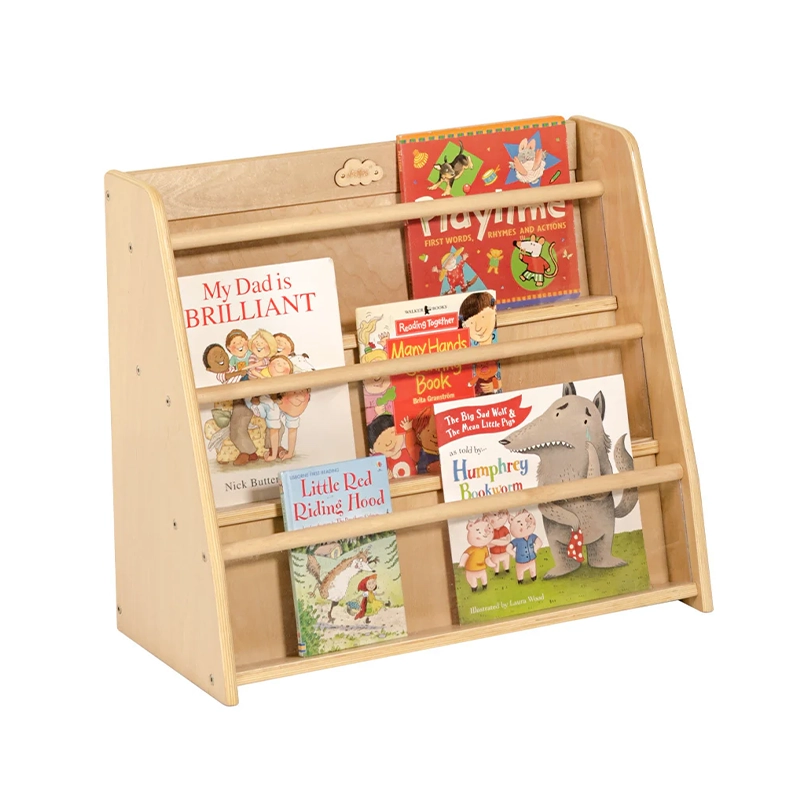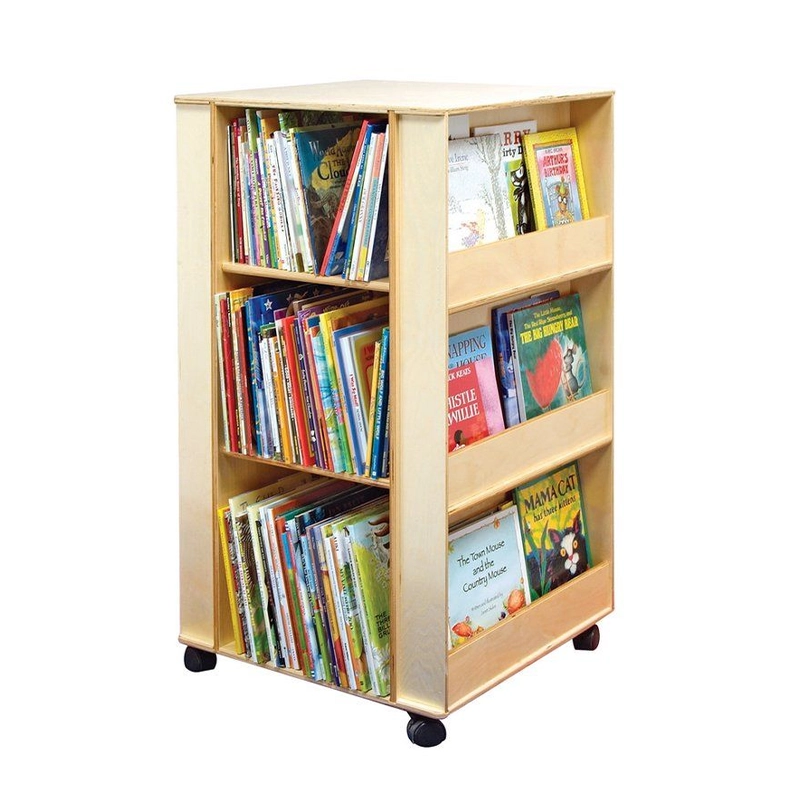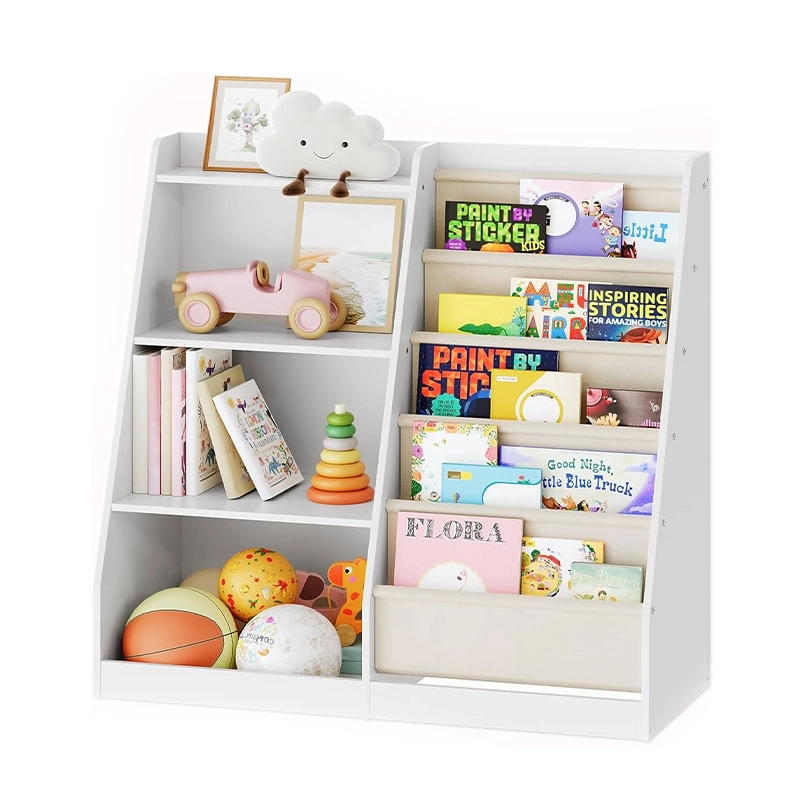Classroom Bookshelf Solutions
Professional Shelving Units for Educational Environments
Our Classroom Bookshelf collection offers high-quality, functional shelving solutions to optimize classroom organization and enhance learning spaces. Tailored for educational settings, these bookshelves are available in various configurations, from open shelving to modular units, providing efficient storage for books, teaching materials, and resources.
Ideal for schools, Montessori classrooms, and early childhood education centers, these bookshelves integrate seamlessly into any classroom layout. With customization options for size, color, and configuration, we ensure that each shelving unit is crafted to meet the specific needs of your learning environment. Elevate your classroom's functionality and aesthetics with our premium Classroom Bookshelf solutions.
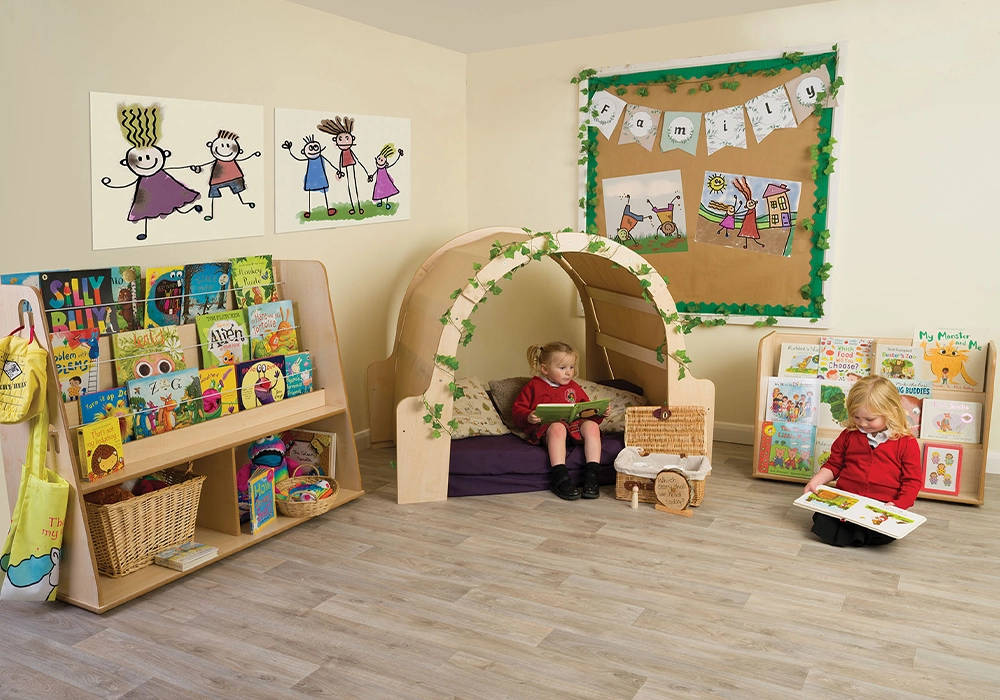
Classroom Bookshelf Types
Versatile Shelving Solutions for Daycare Classroom
Our range of classroom bookshelves includes a variety of open shelves, cubbies, wall-mounted shelves, mobile shelves, and adjustable units, offering a wide range of classroom bookshelf styles to suit different classroom layouts and storage requirements.

Bookcase With Storage

Bookshelf with Storage
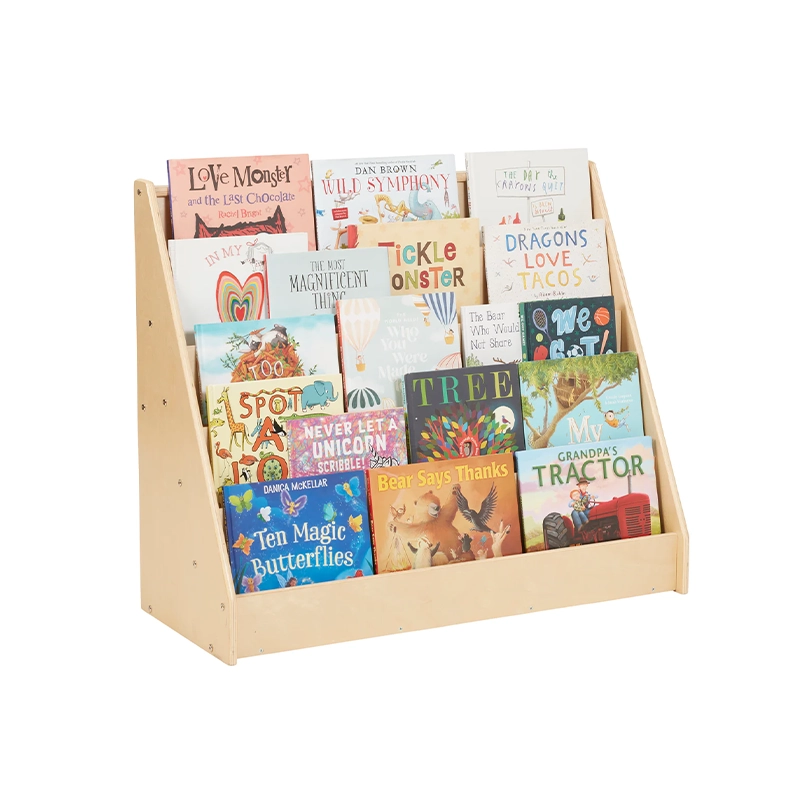
Single-Sided Book Display

Bookshelf with Wheels
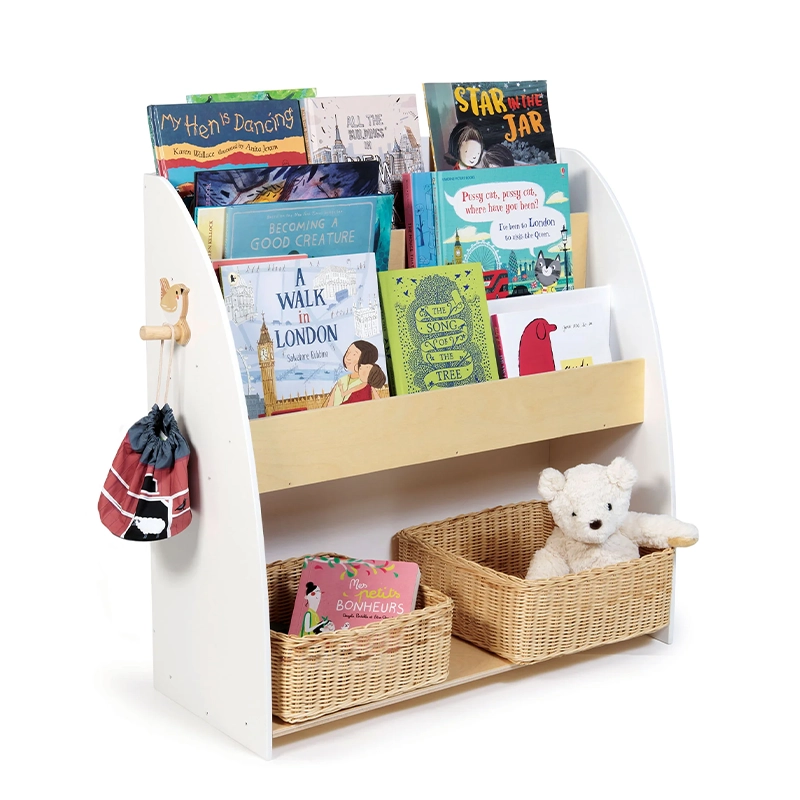
Forest Book Case

Double Side Bookcase

Rainbow Pocket Bookshelf
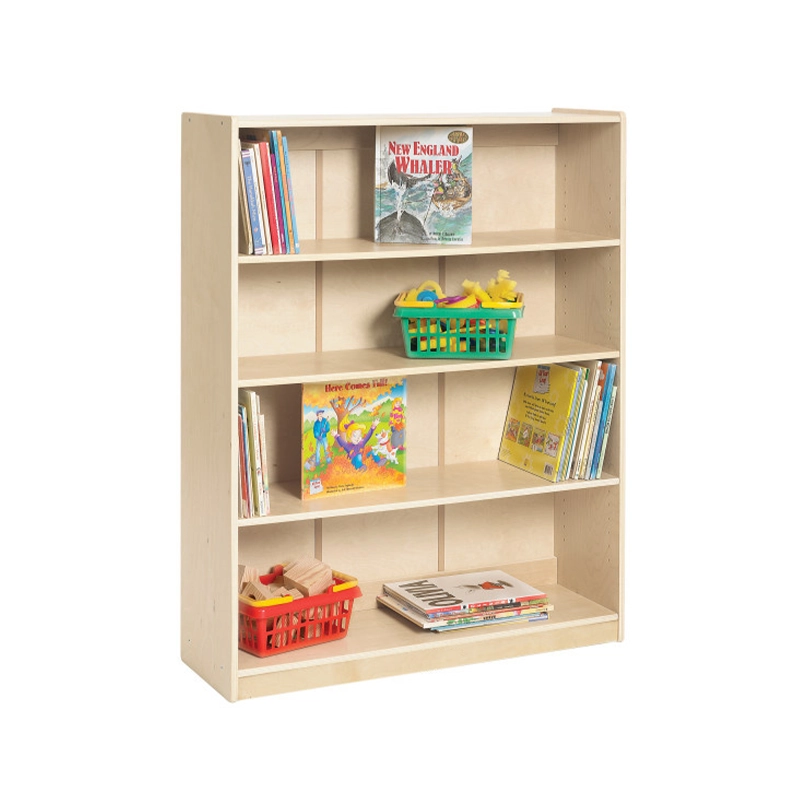
Childcare Book Shelves
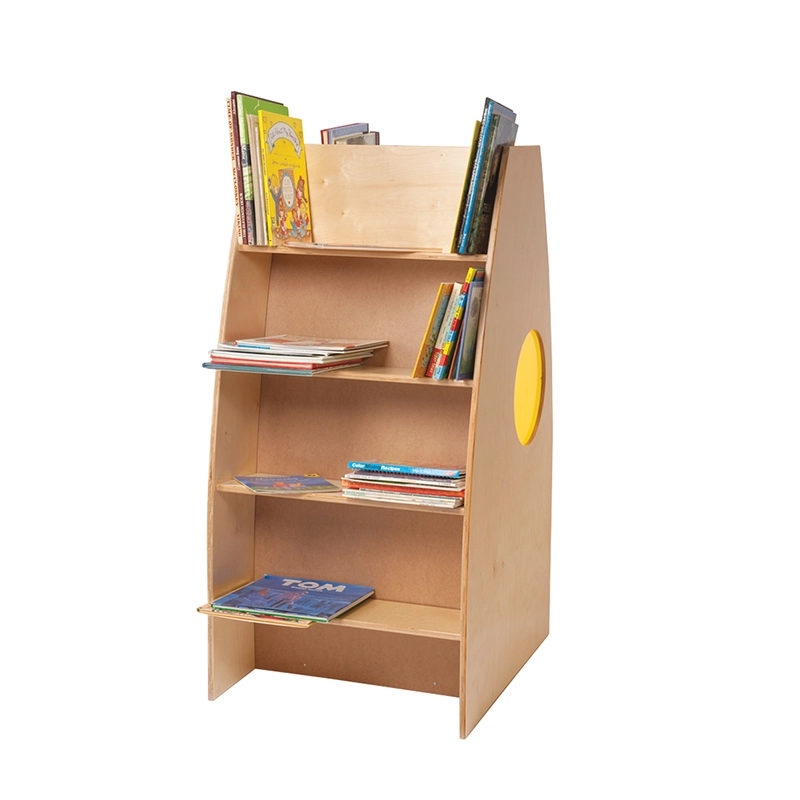
Alone Zone Reading Nook

Children's Reading Nooks

Shape of Tree Bookdisplay

Dinosaur Bookcase
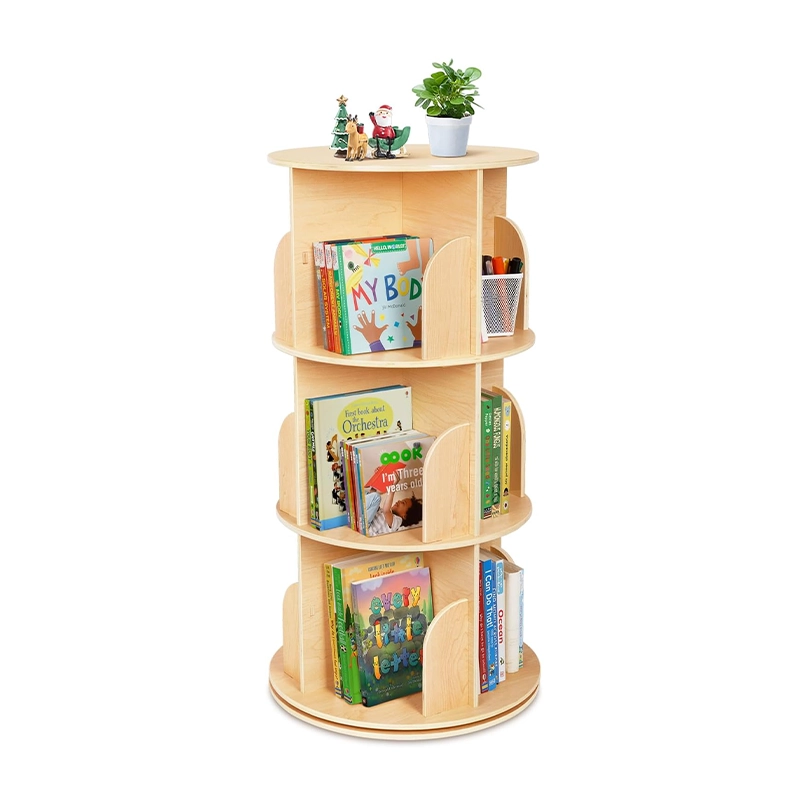
Rotating Bookshelf

Toddler Book Browser
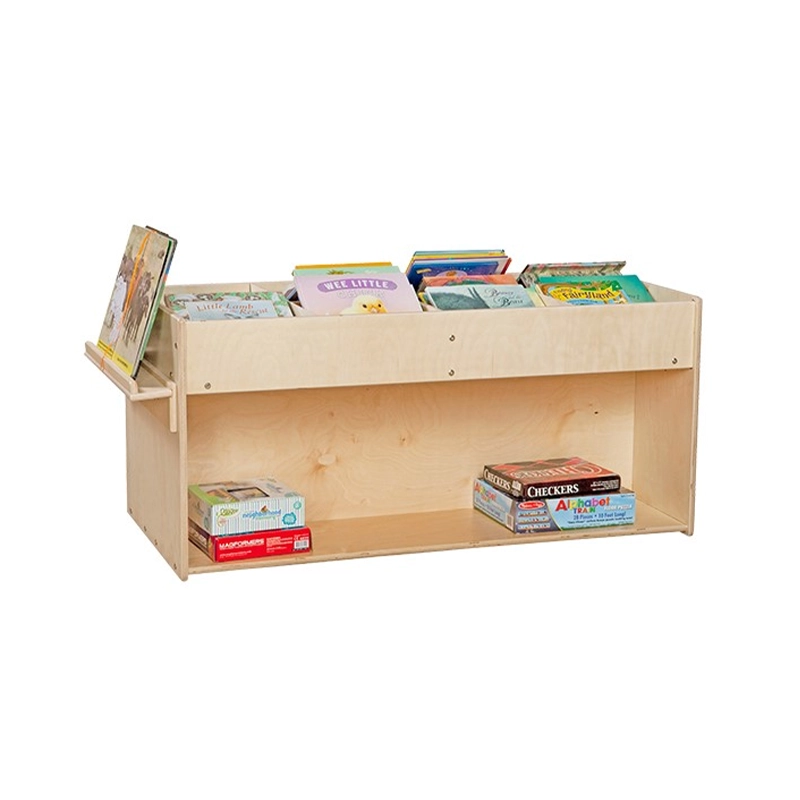
Book Organizer
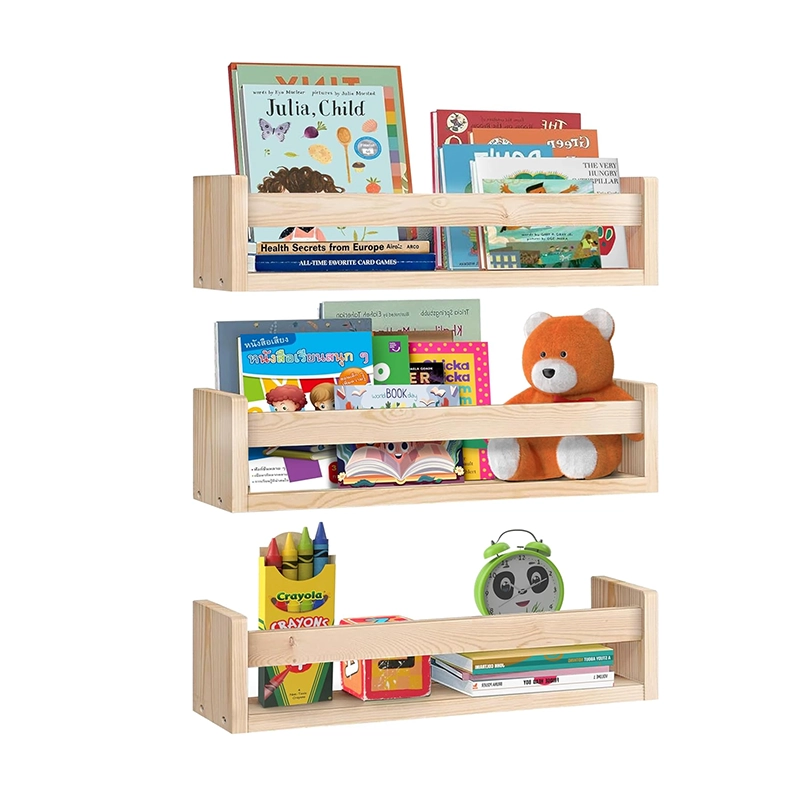
Floating Book Shelves
Reliable Manufacturer and Supplier of Custom Classroom Furniture
As a leading manufacturer and supplier of customized classroom furniture, we specialize in providing high-quality, durable solutions tailored to the needs of educational institutions. With years of experience in the industry, our expertise spans the design, production, and delivery of furniture that enhances learning environments, including classroom bookshelves, desks, chairs, and storage solutions.
Our commitment to quality craftsmanship and attention to detail ensures that each product meets the highest safety, functionality, and aesthetic appeal standards.
Serving clients globally, including renowned educational institutions, we offer a wide range of customized preschool furniture options. From adjustable bookshelves to multifunctional storage units, we work closely with each client to create products that match their unique size, color, and function specifications.
Many Materials Available
When selecting a Classroom Bookshelf, the material used is crucial in ensuring durability, safety, and functionality. Our Classroom Bookshelves are available in premium materials, each offering unique benefits to suit various classroom environments. Below are the materials we provide for our shelving units:
-
Plywood Highly durable and versatile, plywood is a popular material for Classroom Bookshelves due to its resistance to impact and wear. It provides a solid, sturdy structure that can hold large amounts of books and materials.
-
MDF Known for its smooth, uniform surface, MDF is ideal for shelves requiring detailed, smooth finishes. It is dense and sturdy, offering an affordable yet high-quality option for classrooms with moderate storage needs.
-
Solid Wood Solid wood provides a classic and premium option for Classroom Bookshelves. Its natural aesthetic brings warmth and sophistication to any classroom. Wood species like oak, maple, and birch are frequently used for their strength and ability to withstand heavy use.
-
Birch Plywood Birch is a strong, durable wood known for its fine grain and smooth texture. Birch plywood offers a more refined appearance and greater resistance to wear and tear, making it an excellent choice for bookshelves that will undergo frequent use.
-
Particle Board A cost-effective option made from compressed wood particles, particle board is commonly used for Classroom Bookshelves in less demanding environments. It is lightweight and can be laminated for added durability.
-
Solid Oak Oak is a hardwood known for its strength and longevity. Solid oak bookshelves offer timeless appeal, with a natural grain pattern that adds a sophisticated touch to any classroom. Oak is perfect for heavy-duty shelving that will last for years.
-
Pine Wood Pine is a softwood that provides an affordable, lightweight option for bookshelves. It has a light color with natural knots, offering a rustic look while still being strong enough for standard classroom storage.
-
Rubberwood Sourced from the rubber tree, rubberwood is a sustainable material known for its durability and resistance to wear. It is an eco-friendly option for Classroom Bookshelves, ideal for schools that prioritize sustainable sourcing.
-
Metal For those seeking a modern and robust shelving solution, metal bookshelves provide excellent strength and stability. Metal shelving units are resistant to wear, rust, and moisture, making them perfect for high-traffic classrooms or areas with heavy usage.
-
Plastic Lightweight, easy to maintain, and resistant to moisture, plastic bookshelves are an ideal choice for younger children’s classrooms or daycare centers. They are non-toxic, durable, and can withstand spills and rough handling.
Importance of Classroom Bookshelves
A classroom bookshelf is far more than just a place to store books. It plays a vital role in shaping the learning environment, influencing how students interact with the materials around them, and fostering a love of reading. Whether it’s a preschool bookcase, these storage units are integral to a classroom's organization, aesthetics, and functionality. Let’s break down the key reasons why bookshelves are so crucial in the school.
Promotes Organization and Reduces Clutter
One of the most immediate benefits of having a classroom bookshelf is that it helps organize the classroom. When books and materials are stored on a classroom bookshelf, it eliminates the chaos of scattered papers, books, and educational tools, allowing both teachers and students to maintain a clutter-free environment. In younger classrooms, such as preschool classrooms, it helps keep books within easy reach and ensures that everything has its place. Teachers can avoid piles of unorganized materials and create a space that feels calm and manageable.
Encourages Independence and Self-Regulation
Having a daycare bookshelf means that children have easy access to books, educational games, or other learning tools. This accessibility encourages children to explore materials on their own, boosting their independence and sense of responsibility. Younger children can learn to pick out books, put them back, and even follow a structured routine for maintaining the bookshelf, which promotes good habits early on. This is crucial for building organizational skills and a sense of ownership of their space.
Maximizes Classroom Space
Classrooms, especially preschool classrooms, are often limited in space. Bookshelves, particularly bookshelves for classroom with a compact design, can help maximize vertical storage, utilizing wall space effectively. If you choose mobile or rolling bookshelf classroom units, you can also move them around to adjust the layout according to your classroom's needs. This makes the bookshelf not only a storage solution but also a versatile classroom tool that adapts to different activities or learning stations.
Enhances Classroom Aesthetics
A classroom bookshelf can greatly enhance the aesthetics of the room. Whether it’s a modern daycare bookshelf or a more traditional wooden bookshelf classroom, the design, color, and organization of the bookshelf can add a visually appealing touch to the classroom. The shelf itself can also reflect the classroom theme—whether it's playful and colorful for younger students or sleek and minimalist for older students.
Types of Classroom Bookshelves
When selecting a bookshelf for your classroom, the options are plentiful. Different designs and styles of classroom bookshelves offer unique advantages, depending on the layout of your classroom and how you plan to use the bookshelf. Below are the most common types of classroom bookshelves that can help maximize space and improve classroom organization:
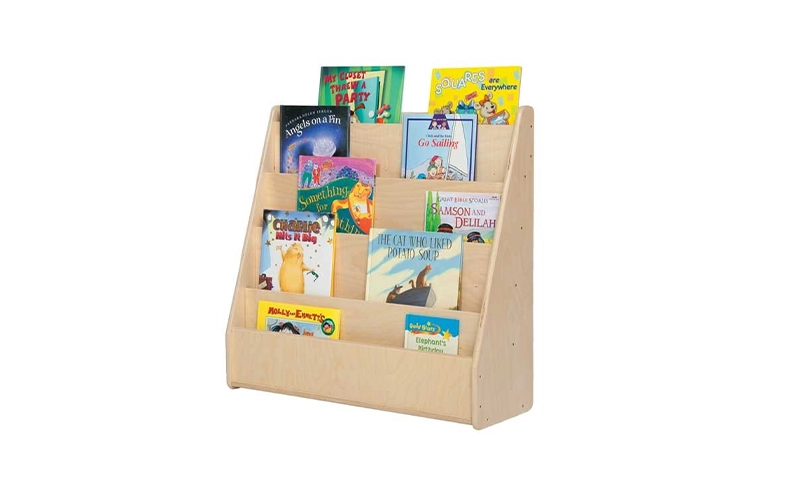
Standard Open Bookshelves
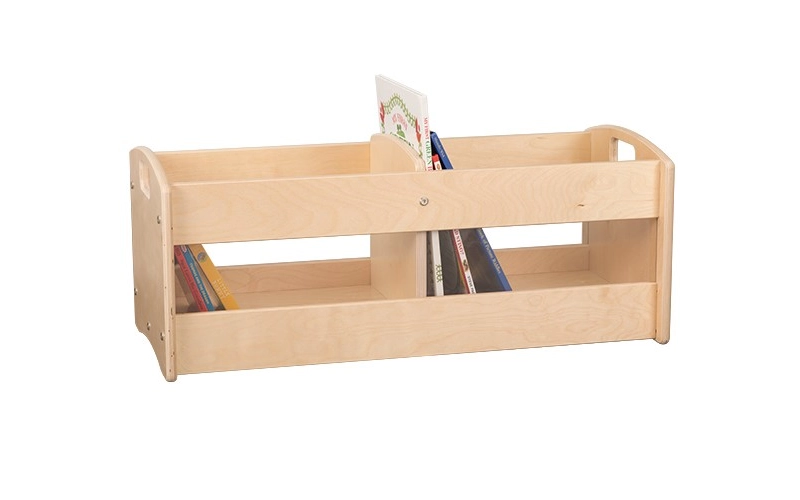
Cube Shelves
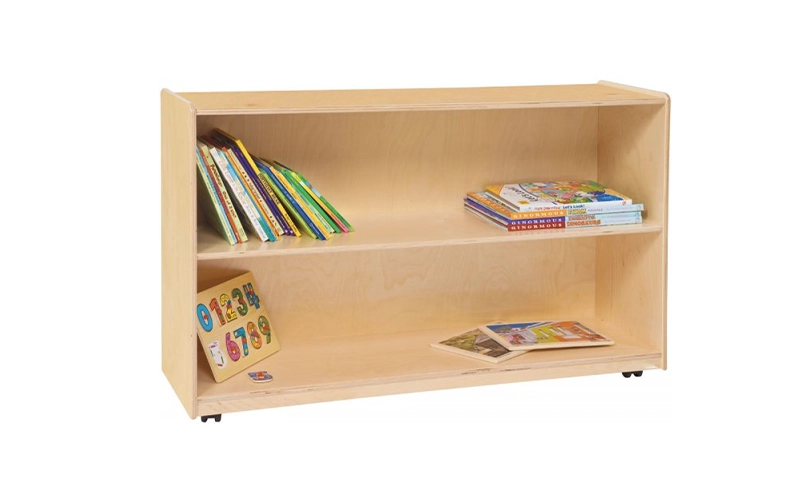
Mobile Bookshelves
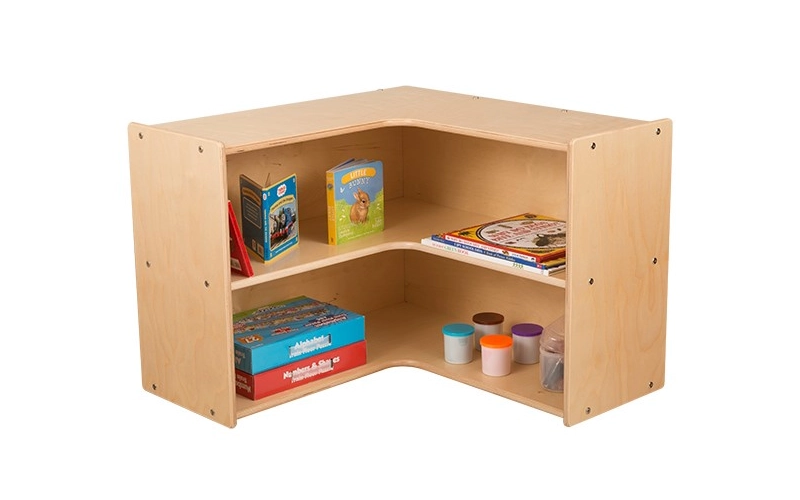
Corner Bookshelves
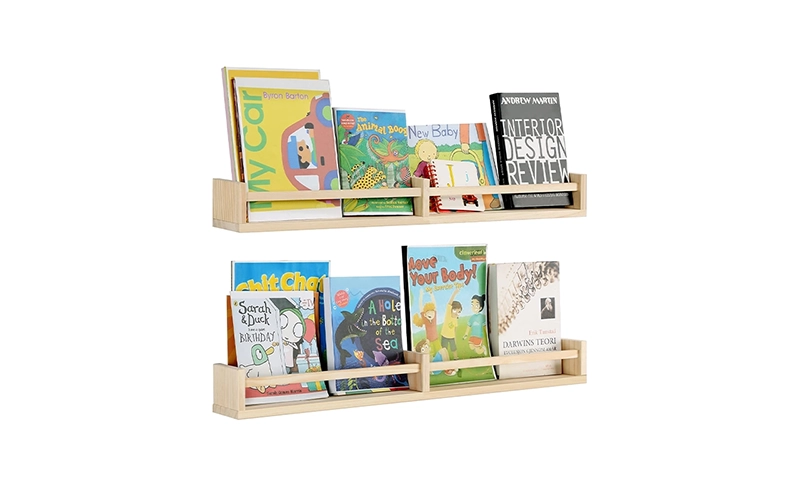
Wall-Mounted Shelves

Revolving Bookshelves
Key Considerations When Choosing Classroom Bookshelves
Choosing the right bookshelf for your classroom involves much more than just picking one that looks good. It’s essential to consider several factors to ensure that the bookshelf suits your classroom’s specific needs. Below, we’ll break down the key considerations to guide your decision:
Confirm Storage Needs
Before purchasing any bookshelf, it’s essential to assess the storage needs of your classroom. How many books, supplies, or educational resources must you store? If your classroom has a small library or students bring their books, you may need a giant bookshelf. On the other hand, if the bookshelf is primarily for holding classroom materials like workbooks, pencils, and other supplies, a smaller unit may suffice. Understanding your storage needs will help you narrow the options and avoid overcrowding.
Adjustability and Versatility
Classrooms evolve, and so do their needs. A bookshelf that offers adjustable shelves provides long-term value. This feature allows you to modify the height of each shelf depending on the types of books or materials you need to store. If your classroom receives new materials often, a versatile bookshelf that can be reconfigured or expanded will save you time and money. Whether you’re organizing books, art supplies, or student projects, having flexibility in your bookshelf layout is critical.
Suitable Size for the Classroom
The size of the bookshelf should align with the dimensions of your classroom. A small classroom may benefit from compact bookshelves or wall-mounted units, while larger rooms can accommodate more spacious or multi-shelved units. It’s also important to consider the height of the bookshelf. In classrooms with younger students, ensure the shelf is low enough for them to access safely. Taller shelves that can hold more books might be more suitable for older students. For preschool bookshelves or kindergarten bookshelfs, consider low-height units that students can access easily.
Material and Durability
Durability is a significant consideration when choosing a classroom bookshelf. Students may be rough with furniture, and teachers need a bookshelf that can withstand heavy use. Opt for sturdy materials such as solid wood, metal, or durable plastic. Wooden bookshelves provide a classic, natural look but require more maintenance. Metal bookshelves are typically more modern and durable, while plastic units are lighter, easier to move, and less robust. Consider the trade-offs between materials to find the best fit for your classroom’s needs.
Aesthetics and Classroom Theme
A classroom bookshelf doesn’t just need to be functional—it should also contribute to the room’s overall atmosphere. Look for bookshelves that complement your classroom’s colors, theme, and aesthetic. The bookshelf should tie into your design vision, whether you aim for a minimalist, modern look or a playful, vibrant feel. Additionally, consider how the bookshelf will help create a welcoming environment for students to explore and enjoy their learning materials.
Safety Features
Safety should always be a priority when choosing classroom furniture. Bookshelves with sharp edges, tipping hazards, or unstable structures can pose a risk to students. Ensure that the bookshelf you select has rounded corners to avoid injury. It would be best to consider bookshelves with anti-tip features or anchoring options, particularly for taller shelves. These safety features will help ensure the bookshelf remains secure, even in a busy classroom environment.
What Is the Difference Between Wooden and Plastic Bookshelves?
When selecting a bookshelf for your classroom, one of the primary considerations is the material. Wooden bookshelves and plastic bookshelves each come with their own set of advantages and disadvantages. Understanding the differences can help you choose the best option for your classroom's needs.
Wooden Bookshelves: A Classic and Durable Option
Wooden bookshelves are the traditional choice for many classrooms. They are sturdy, durable, and have a timeless appeal that complements almost any classroom decor.
- Durability and Longevity: Wooden bookshelves are known for their strength and durability. They can withstand the rigors of daily use, making them an excellent investment for classrooms that need furniture to last for many years. They are less likely to bend or warp underweight, making them a fantastic option for storing heavy books. Over time, a wooden bookshelf classroom can maintain its structural integrity and gain a vintage look.
- Aesthetic Appeal: Wood has a warm, natural aesthetic that can bring a sense of coziness and comfort to the classroom. Whether you opt for a classic oak finish or a more modern, polished look, a wooden bookshelf blends well with traditional and contemporary classroom designs. It is particularly well-suited for spaces where you want a more grounded, stable atmosphere.
- Customization and Repairability: Wood is a material that can be easily customized. You can stain, paint, or decorate wooden bookshelves to fit your classroom’s color scheme or theme. If a wooden bookshelf classroom shows signs of wear over time, it can often be repaired or refinished to restore its original appearance.
- Cost and Maintenance: The downside of wooden bookshelves is that they are more expensive than plastic alternatives. Additionally, wood requires regular maintenance, such as polishing or sealing, to protect it from scratches or moisture. It may also require more care in classrooms with young children prone to spills and messes.
Plastic Bookshelves: Practical and Lightweight
Plastic bookshelves offer a more modern, practical option, especially in classrooms where durability and ease of maintenance are crucial. These bookshelves are often seen in preschool bookshelves due to their lightweight design and easy-to-clean surfaces.
- Lightweight and Easy to Move: Plastic bookshelves are significantly lighter than wooden bookshelves, making them easy to move around. This is particularly advantageous in classrooms that need flexible furniture arrangements. A moveable classroom bookshelf can be repositioned quickly to create space for group activities or events. You can also choose a bookshelf classroom on wheels for even greater mobility.
- Affordability and Practicality: Plastic bookshelves are generally more affordable than wooden ones, making them ideal for budget-conscious educators. They require little to no maintenance, which is a major plus for busy classrooms, especially preschool classrooms. The smooth surface of plastic shelves is easy to wipe down, making them perfect for classrooms where cleanliness is a priority.
- Durability for Younger Children: Plastic bookshelves are designed to be tough and resilient. They can withstand the wear and tear of a classroom with younger children. They are less likely to splinter or break when bumped, making them a safe option for a preschool bookshelf.
- Limited Aesthetic Options: Plastic bookshelves are functional but have fewer aesthetic options than wood. They often come in basic colors like white, gray, or primary colors, which may not fit well with specific classroom themes.

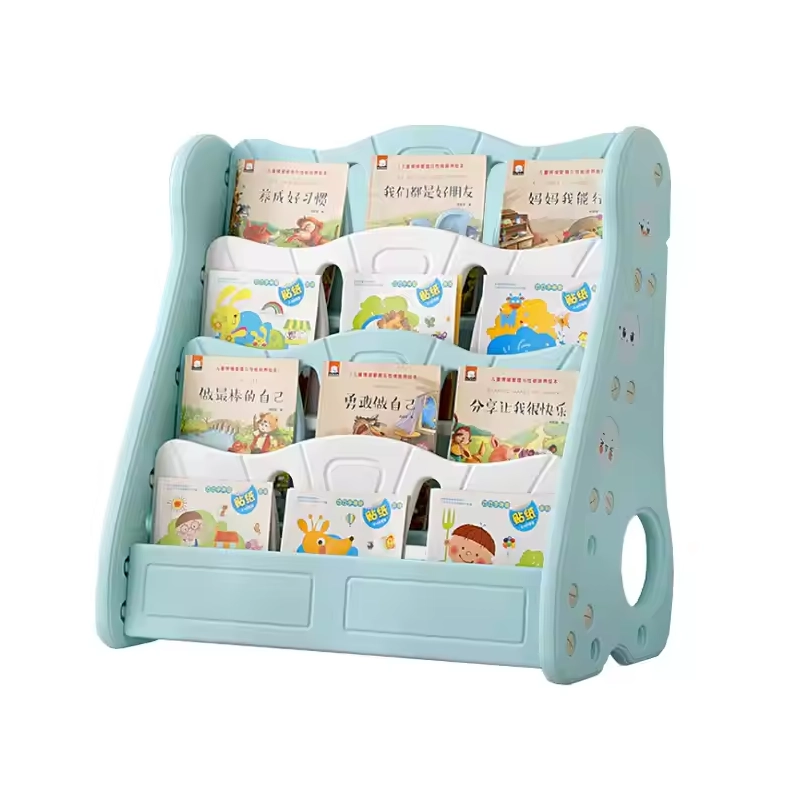



Organization and Storage Options for Classroom Bookshelves
When organizing a classroom bookshelf, it’s essential to consider functionality and accessibility. A well-organized bookshelf ensures that books, educational materials, and supplies are easy to find and use, fostering a more efficient and productive learning environment. Here are some practical organization and storage options for classroom bookshelves:
Organize by Reading Level or Genre
Use Bins and Baskets for Smaller Items
Incorporate Tiered Shelves for Easy Visibility
Labeling for Easy Access
Maximize Vertical Space
Mobile Bookshelves for Flexibility
FAQs
Organize books by theme, reading level, or type to make them easily accessible to children. Use labels with pictures to help non-readers identify book categories.
To set up a preschool library, start by selecting various age-appropriate books. Create a comfortable reading area with accessible bookshelves, cozy seating, and adequate lighting. Ensure the book area is inviting and regularly updated to maintain interest.
Use low, open shelving where books can be displayed with covers facing forward. This setup allows children to see and choose books independently, fostering a love for reading.
Library centers introduce young children to books and reading, fostering early literacy skills. They provide a dedicated space for children to explore books independently or with guidance, helping to develop a lifelong love of reading.
Book corners promote quiet and reflective learning in a comfortable setting. They help children develop a habit of reading and provide a space for imaginative exploration through stories.
Bookshelves in the classroom serve to organize and display educational resources, making them readily available to teachers and students. They help maintain a tidy learning environment and promote an organized way of retrieving and storing books.
They facilitate easy access to various reading materials, encourage independent reading choices, and help to organize the space effectively, which supports the educational curriculum.
A bookcase is typically a larger, more enclosed unit with multiple shelves that may have doors or enclosed sides. It is often used for various storage purposes. A bookshelf is generally more open, offering easy access and display of books, which is particularly useful in educational settings like preschools.
Folding bookshelves are versatile, space-saving solutions that can be expanded when needed and stored away compactly when not in use. They are ideal for dynamic classroom environments where space is at a premium.
Ensure bookshelves are stable and secured to walls if necessary to prevent tipping. Choose shelves with rounded corners and edges to minimize the risk of injuries and ensure they are made from safe, non-toxic materials.
As a leading manufacturer and supplier of preschool furniture for over 20 years, we have assisted more than 5000 customers in 10 countries with setting up their preschools. If you encounter any issues, please call us for a free quote or to discuss your needs.
